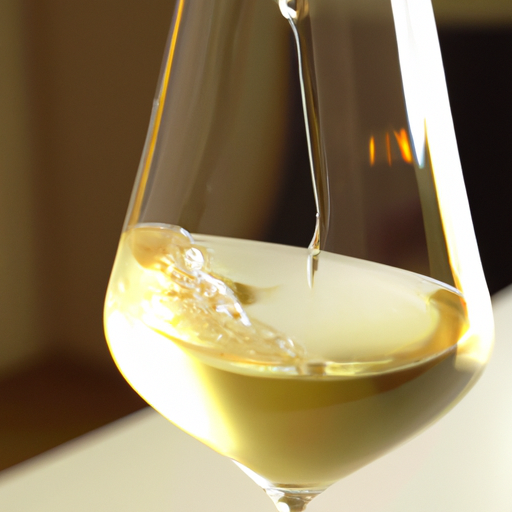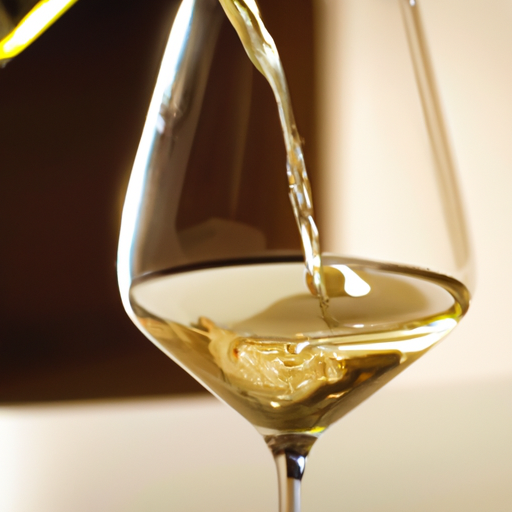
The History and Origins of Chardonnay
Chardonnay is one of the most popular and widely consumed white wines in the world. Its rich and buttery flavor profile has made it a favorite among wine enthusiasts and casual drinkers alike. But where did this beloved wine originate, and how did it become so popular?
The history of Chardonnay dates back centuries, with its origins rooted in the Burgundy region of France. It is believed that the grape variety was first cultivated in the village of Chardonnay, hence its name. The cool climate and limestone-rich soils of Burgundy provided the perfect conditions for Chardonnay to thrive, and it quickly became a staple in the region.
In the early days, Chardonnay was primarily used to produce still wines. Its versatility and ability to express the terroir of the vineyard made it a favorite among winemakers. However, it wasn’t until the 1980s that Chardonnay gained international recognition and popularity.
During this time, winemakers in California began experimenting with Chardonnay, planting vineyards in regions such as Napa Valley and Sonoma County. The warmer climate and different soil compositions produced Chardonnay wines with a distinct flavor profile. These California Chardonnays were often characterized by their ripe fruit flavors, creamy texture, and oaky notes.
The popularity of California Chardonnay quickly spread, and it became a symbol of American winemaking prowess. The wine’s rich and opulent style appealed to many consumers, and it soon became a staple on wine lists and in households across the country.
In recent years, Chardonnay has also gained popularity in other parts of the world, such as Australia and New Zealand. These regions have their own unique climates and soil types, which result in Chardonnays with different flavor profiles. Australian Chardonnays, for example, are known for their tropical fruit flavors and crisp acidity.
Despite its global popularity, Chardonnay has faced some criticism over the years. Its rich and buttery style has been labeled as “over-oaked” by some wine critics, leading to a backlash against the wine. In response, winemakers have started producing Chardonnays with less oak influence, allowing the natural flavors of the grape to shine through.
Today, Chardonnay is produced in a wide range of styles, from crisp and unoaked to full-bodied and oaky. Winemakers have embraced the grape’s versatility, experimenting with different fermentation techniques and aging methods to create wines that cater to a variety of palates.
Whether you prefer a classic Burgundian Chardonnay or a fruit-forward California style, there is no denying the impact that this grape has had on the wine world. Its rich history and ability to adapt to different climates and winemaking techniques have made it a true icon in the world of white wine.
So, the next time you pour yourself a glass of Chardonnay, take a moment to appreciate the centuries of winemaking tradition and innovation that have gone into creating this beloved wine. Cheers!
Understanding the Characteristics and Flavor Profile of Chardonnay

Chardonnay is one of the most popular and widely consumed white wines in the world. It is known for its versatility and ability to pair well with a variety of foods. To truly appreciate and enjoy Chardonnay, it is important to understand its characteristics and flavor profile.
Chardonnay is a dry white wine that is made from the Chardonnay grape. It is typically unoaked, although some producers choose to age it in oak barrels, which can impart additional flavors and aromas. Chardonnay is known for its medium to full body, which gives it a rich and creamy texture on the palate.
One of the defining characteristics of Chardonnay is its fruit flavors. Depending on the region and climate in which it is grown, Chardonnay can exhibit a wide range of fruit flavors, including apple, pear, citrus, tropical fruits, and even stone fruits like peach and apricot. These fruit flavors can be either fresh and crisp or ripe and luscious, depending on the ripeness of the grapes at harvest.
In addition to fruit flavors, Chardonnay often displays secondary flavors and aromas that come from the winemaking process. These can include notes of vanilla, butter, toast, and even caramel. These flavors are often the result of aging the wine in oak barrels, which can add complexity and depth to the wine.
The acidity of Chardonnay is another important characteristic to consider. Chardonnay can range from high to low acidity, depending on the region and winemaking techniques. Higher acidity Chardonnays tend to be more refreshing and vibrant, while lower acidity Chardonnays can be rounder and smoother on the palate.
When it comes to food pairing, Chardonnay is incredibly versatile. Its medium to full body and rich texture make it a great match for a wide range of dishes. Chardonnay pairs particularly well with seafood, especially shellfish like lobster and crab. Its acidity and fruit flavors also make it a great match for poultry, particularly chicken and turkey. Additionally, Chardonnay can stand up to creamy sauces and rich dishes, making it a great choice for dishes like pasta carbonara or roasted pork.
To truly master the art of serving Chardonnay, it is important to consider the temperature at which it is served. Chardonnay is best served chilled, but not too cold. Serving it too cold can mute its flavors and aromas, while serving it too warm can make it taste flabby and unbalanced. Aim to serve Chardonnay at around 50-55 degrees Fahrenheit, which allows its flavors to shine while still maintaining its refreshing qualities.
In conclusion, understanding the characteristics and flavor profile of Chardonnay is essential for mastering the art of serving this popular white wine. From its fruit flavors to its secondary aromas, Chardonnay offers a wide range of flavors and textures to explore. Its versatility in food pairing makes it a great choice for a variety of dishes. By serving Chardonnay at the right temperature, you can fully appreciate its complexity and enjoy it to its fullest. So next time you reach for a bottle of Chardonnay, take a moment to savor its unique characteristics and flavors.
Expert Tips for Pairing Chardonnay with Food
Mastering the Art of Serving Chardonnay
Chardonnay, a versatile and popular white wine, is loved by many for its rich flavors and smooth texture. Whether you are a wine enthusiast or simply enjoy a glass of wine with your meals, knowing how to pair Chardonnay with food can elevate your dining experience to a whole new level. In this article, we will explore expert tips for pairing Chardonnay with food, helping you to master the art of serving this delightful wine.
When it comes to pairing Chardonnay with food, it is important to consider the characteristics of the wine. Chardonnay is known for its medium to full body, with flavors ranging from crisp and citrusy to creamy and buttery. These characteristics make it a versatile wine that can be paired with a wide variety of dishes.
One classic pairing for Chardonnay is seafood. The crisp acidity and citrus notes of Chardonnay complement the delicate flavors of seafood, such as shrimp, scallops, and lobster. Grilled or roasted fish, such as salmon or halibut, also pair well with Chardonnay, especially when served with a creamy sauce or butter.
If you prefer white meat, Chardonnay can also be paired with chicken and turkey dishes. The richness of the wine complements the flavors of roasted or grilled poultry, especially when served with creamy sauces or buttery mashed potatoes.
For those who enjoy vegetarian or vegan dishes, Chardonnay can be a great choice. Its versatility allows it to pair well with a variety of vegetable-based dishes. Try pairing Chardonnay with roasted vegetables, creamy risottos, or pasta dishes with a butter or cream-based sauce. The wine’s creamy texture and subtle oak flavors can enhance the flavors of these dishes, creating a harmonious balance.
When it comes to cheese, Chardonnay pairs well with a variety of options. Soft and creamy cheeses, such as Brie or Camembert, complement the wine’s buttery flavors. Aged cheeses, such as Gruyere or Cheddar, can also be paired with Chardonnay, as their nutty flavors and firm textures complement the wine’s richness.
When serving Chardonnay, it is important to consider the temperature at which it is served. Chardonnay is best served chilled, but not too cold. The ideal serving temperature for Chardonnay is between 45 and 55 degrees Fahrenheit. This allows the wine to showcase its flavors and aromas without being overly chilled.
To enhance the flavors of Chardonnay, consider decanting the wine before serving. Decanting allows the wine to breathe, releasing its aromas and softening its flavors. Simply pour the wine into a decanter and let it sit for 15 to 30 minutes before serving. This simple step can greatly enhance your Chardonnay tasting experience.
In conclusion, mastering the art of serving Chardonnay involves understanding its characteristics and pairing it with the right foods. Whether you prefer seafood, white meat, vegetarian dishes, or cheese, Chardonnay can be a versatile and delightful companion. By considering the flavors and textures of the dishes you are serving, as well as the temperature and decanting process, you can create a harmonious pairing that will elevate your dining experience. So, next time you reach for a bottle of Chardonnay, remember these expert tips and savor the flavors of this beloved white wine.






